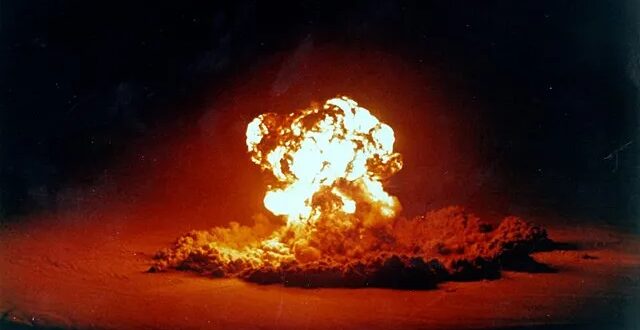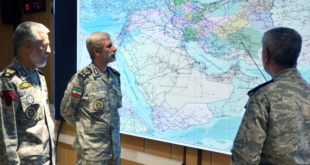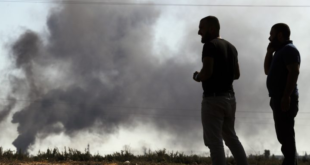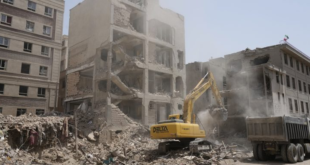The latest news from the front in Ukraine is that the Russian offensive into Donbas is stalling as well. The Russian army, after seeing its most effective combat formations shot to pieces attempting a combined arms offensive along at least five routes of advance, attempted to reposition its forces and renew offensive operations on a more limited scale in Donbas and Luhansk. It also sought the reduction of Mariupol in order to advance on Odesa and cut Ukraine off from the Black Sea, effectively crippling its economy in the future.
Russia is Losing and it Knows it
What we have seen recently is a sharp increase in the number of casualties to Russian forces in the region without any appreciable gain in territory. In fact, in some places, Ukrainian forces are advancing and pushing the Russians back. The airspace over Ukraine remains contested, the Russians don’t seem to have the inventory on hand in terms of missiles and bombs to systematically destroy Ukraine’s command and control structure, communications, transportation network, and manufacturing assets. Instead, they are just pouring troops into a meat grinder hoping that the sheer weight of numbers will win out.
In this fight, Ukraine enjoys three major advantages:
First, billions in military aid are pouring into the country to replace what is lost or expended in combat, allowing them to maintain operational combat power. As their combat formations gain experience they become more and more effective, while Russian units are being destroyed before they can gain this kind of experience for themselves.
Second, Ukraine’s military is fighting with a home turf advantage and very high morale. There is no place to go if they lose, Russia will absorb Ukraine into its territory, and its people will become an oppressed minority within the Russian Federation.
Third, while Ukraine has considerable intelligence capabilities of its own, it is receiving signals and imagery intelligence from the US and NATO. Right now, the US probably has at least two satellites parked over Ukraine in geostationary orbit looking at every movement of Russian forces both day and night. Ours use Synthetic Aperture Radar (SAR), which can view the ground regardless of smoke, and cloud cover at any time of the day or night. The focus can be as tight as an area of 20×20 inches providing crystal clear images.
What this war is becoming very quickly is a grinding war of attrition that will test which side has the most resources to fight and the greater will to win in the end. Russia cannot replace its losses as quickly as the US and NATO can replace Ukraine’s, and Russian morale is widely seen as dismal at this point. Not only are Russian troops disinclined to invade Ukraine, which they have no real reason to hate, but they are also badly treated by their own army with poor equipment, food, ammunition, and inept leadership.
We wrote earlier in the conflict that we did not believe that Russia would employ nuclear weapons against Western Europe and the US as we do not believe that Putin is bent on committing national suicide and destroying his own country and most of the world along with it if he can’t have Ukraine. If the West seriously believed that was the case, we would have nuked Russia first preemptively.
But there is a way for Putin to use nuclear weapons to break the stalemate this war is becoming for him that would stave off a full-scale thermonuclear war.
It might look something like this.
How Russia Could Get Away with using Nuclear Weapons and Blame NATO
On the eve of the invasion, Putin declared that Donetsk and Lugansk had declared themselves independent of Ukraine and formed their own republics with their own governments. The Kremlin immediately recognized these entities while the rest of the international community has refused to. This is where most of the fighting is currently taking place right now on the ground. The Kremlin could claim that both these countries invited Russia to use nuclear weapons on their own territory to eject the “invasion” of the Ukrainian army. Russia would probably issue a warning first that Ukraine must withdraw from these two “republics” by a date certain or a major unspecified escalation would occur. Russia would pull its own forces back several miles and issue advisement for all civilians near Ukraine forces in these regions to evacuate eastward as quickly as possible.
Ukraine would assert(correctly) that these republics are diplomatic fictions created by the Kremlin and insist they are only trying to liberate their own territory and refuse to budge.
Once the date has passed, Russia would announce that the government of Donetsk and Lugansk had requested that Russia employ nuclear weapons within their own territorial borders to destroy the Ukrainian forces within them. Russia would assert that their use is not aggression against NATO or the US since they are being used inside the borders of these republics at their own request. Russia would also assert that a nation requesting the use of nuclear weapons on its own soil was not new and that NATO itself has made similar agreements with its member countries going back decades.
Within minutes or hours of this justification, Russia would fire one or more nuclear-armed missiles or bombs inside these territories. The warheads would be of relatively low yield to reduce radioactive fallout over a wide area They would probably be devices of less than 10 kilotons in yield.
The use of nuclear weapons, in this case, would be strategic rather than tactical since the aim would be to end the conflict rather than meet the tactical goal of just defeating an attack or spoiling one by an enemy. Following their use, Russia would ask for a negotiated settlement that recognizes both republics and an end to hostilities. It would invite anyone from the UN, China, and Turkey to mediate the talks.
There would be considerable shock and confusion following the attack that could serve to paralyze US and NATO in responding.
NATO does not have a “No first use” policy, instead, it takes a “Flexible” approach to the use of nuclear weapons. During the Cold War, if the combined Soviet and Warsaw Pact armies invaded Germany, NATO had a standing invitation from the German government for NATO to employ nuclear weapons on their own soil to destroy these armies. Since these weapons were used on Germany and not Russia, it was reasoned that Russia could not claim a “first use” of nukes on their own territory and launch their strategic missiles at the US and Europe in retaliation. In the war at sea, it was generally understood that nuclear-armed missiles and torpedoes would be employed immediately by both sides to destroy each other’s fleets of ships and submarines. Once again, since these missiles would not be used on the landmasses of either the US or USSR, it would not justify a massive retaliation by either side.
There would be a great deal of confusion in Western Europe, NATO, and the US about how to respond to Russia doing this. Fearing total nuclear war between Russia, Europe, and the US, a considerable amount of public support to defend Ukraine could evaporate just like that. There would be a public outcry to negotiate a peace to avoid further escalation of the conflict.
NATO and the US would be forced to respond or be resigned to throwing away the entire Nuclear Deterrence Strategy that has prevented nuclear war for more than 70 years. That current strategy, Mutual Assured Destruction or MAD seeks to keep wars limited and fought by conventional means to avoid escalation to the use of nuclear weapons. If Russia was allowed to use a nuclear weapon to end a war fought with conventional weapons in its favor, MAD is finished. The new paradigm would be the West deterred from confronting Russia with conventional weapons because Russia might use nukes to win a war it was losing with conventional weapons.
NATO and the US can’t allow that to happen which almost assures an in-kind response.
Of course, the Russian argument for using nuclear weapons works both ways. Ukraine could reassert that Donetsk and Luhansk are Ukrainian territory and invite NATO to use nuclear weapons on Ukrainian territory to eject invading Russian forces. The US maintains a considerable stockpile of nuclear weapons in Europe even today. Recently, the B-61-12 nuclear bomb was drop tested using the F-35 Lightning II fighter. This is not a dumb bomb but a precision-guided munition that the F-35’s avionics package can “talk” to and guide to its target. At supersonic speed and high altitude, the F-35 can “loft” the B-61 in a climb and the bomb will fly for miles and miles on a guided arch trajectory. The exact distance is classified, but it may be as far as 30-40 miles.
The F-35 is stealthy enough to approach over the Black Sea without being detected(more so with the Moskva sunk) and lob these bombs into Ukrainian territory at Russian army formations. Unlike a missile, the B-61 doesn’t have a rocket motor that Russian satellites in space can detect as heat bloom that points to its launch location. The accuracy of the JDAM-like guidance system on the B-61-12 has a two-meter accuracy. Again, we are not talking about 350 kiloton “City-Killer” bombs, but lower yield warheads to keep the fallout within a few miles of the detonation. The yield of the B-61-12 can be set as low as .3 kilotons, about 1/50th of the power of the bomb dropped on Hiroshima. If Neutron devices were employed instead, the destructive effect on buildings is minimized while the radiation would be lethal to humans.
The use of these weapons would not necessarily turn the targets into wastelands that could never be tread upon again by humans. The target areas would not be like Chernobyl. There you had an open nuclear reactor spewing Alpha and Gamma radiation into the atmosphere for weeks, these low yield bombs release their lethal radiation in a single blinding flash and then it quickly decays away.
At Hiroshima and Nagaski, the radiation effect of the bombs was just 1% after 48 hours. For every sevenfold increase in time after the explosion, the radiation dose rate decreases by a factor of 10.
That being said, it is likely that along with the military casualties, there will be considerable civilian deaths as well. Deaths that Russia will care little about whether they inflict them or suffer them. Ukraine, NATO, and the US on the other hand will have a very hard time accepting any civilian losses in retaliating in kind. This is something the Russians would probably count on in hopes of avoiding retaliation.
Russia May Be Hinting That They Have Figured This Out
Recent statements from Putin and Foreign Minister Lavrov suggest they may be floating trial balloons to gauge the possible reaction of the West if they used such weapons,
Last week, Putin told assembled Russian lawmakers: “If someone intends to interfere in what is going on from the outside they must know that constitutes an unacceptable strategic threat to Russia.”
“They must know that our response to counter strikes will be lightning fast. Fast.”
He finished saying: “We have all the weapons we need for this. No one else can brag about these weapons, and we won’t brag about them. But we will use them.”
Five days ago, Russian Foreign Minister Sergei Lavrov was on Russian TV saying that a “serious” risk of nuclear war over Ukraine exists.
“The danger is serious, real. It can’t be underestimated,” Lavrov said while complaining that Russan and the US did not have the same understandings in place regarding conduct they did during the Cold War, “now there are few rules left.”
Lavrov is partially right about this. The current administration has tended to dismiss this kind of talk from the Kremlin as “irresponsible” instead of addressing it clearly and concisely that leave the Russians with no misunderstandings about how we and NATO would respond. Miscalculations are bound to happen when neither side knows the calculations of the other. It was a series of miscalculations by both Russia and the West that led to this conflict. NATO and the US talked big about defending Ukraine after it was invaded by Russia in 2014, but provided less than $500 million in military assistance from 2014 until Russia invaded again in 2022. That failure to “put our money where our mouth is” likely led to Putin believing he could march an army into the country again without intervention by NATO or the US.
He was almost right about that too. When the invasion occurred, the Biden administration did not offer billions in weapons assistance for Ukraine to fight back, instead, it offered to evacuate Ukrainian President Zelensky and his family out of the country. Since that time, the President’s policy seems to be driven more by popular public support for defending Ukraine rather than being the leader of that support.
To head this nuclear scenario off the administration and NATO should at minimum say in public that they are aware of its possibility and tell Russia very specifically and clearly how it would be responded to.
 Eurasia Press & News
Eurasia Press & News




